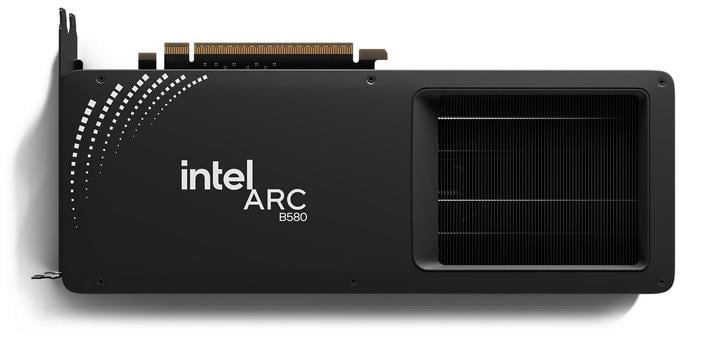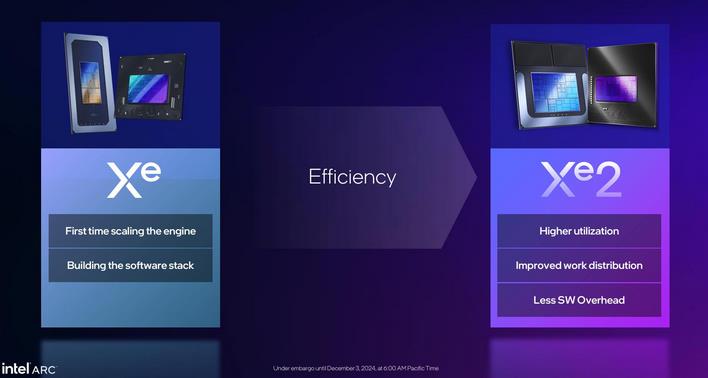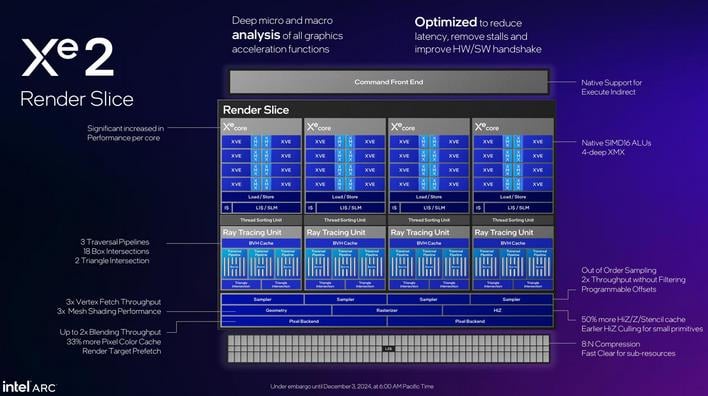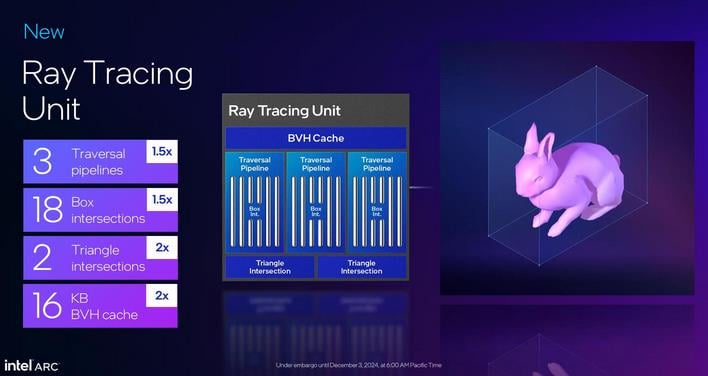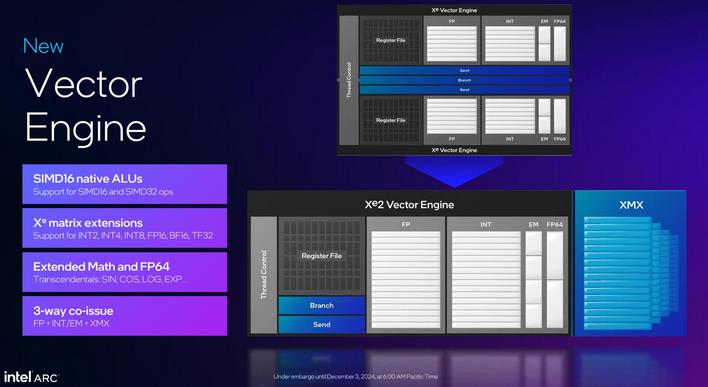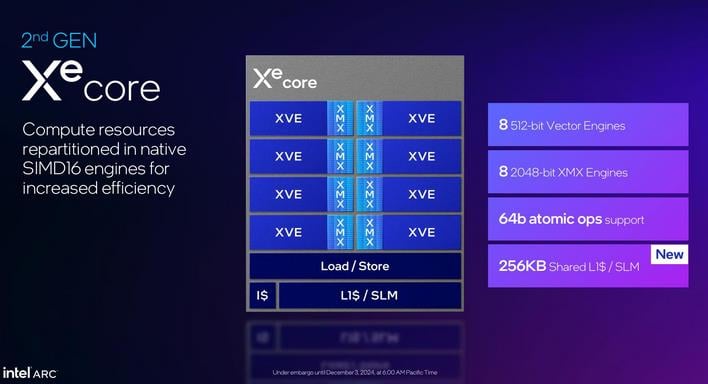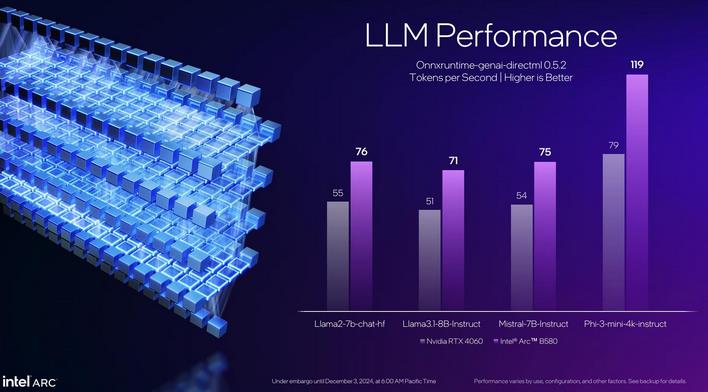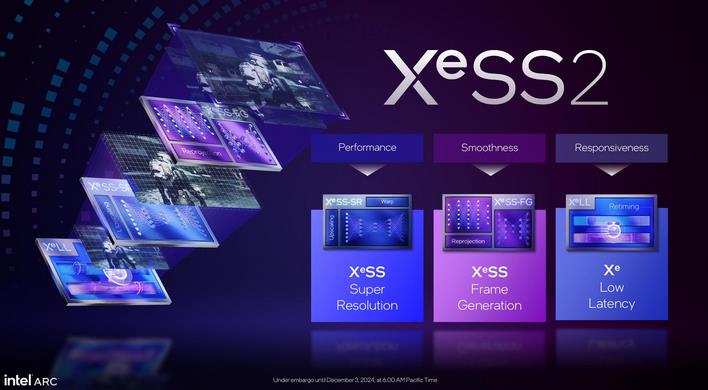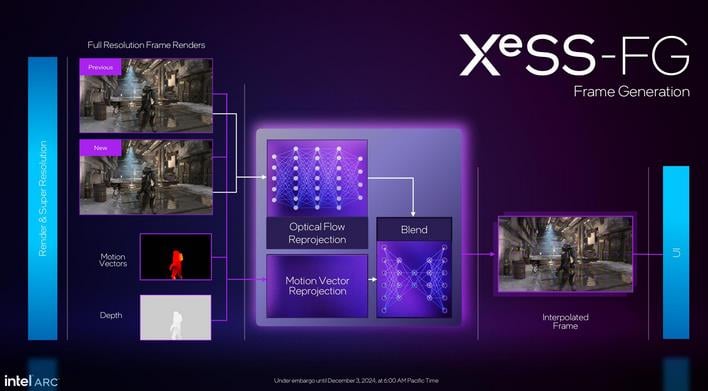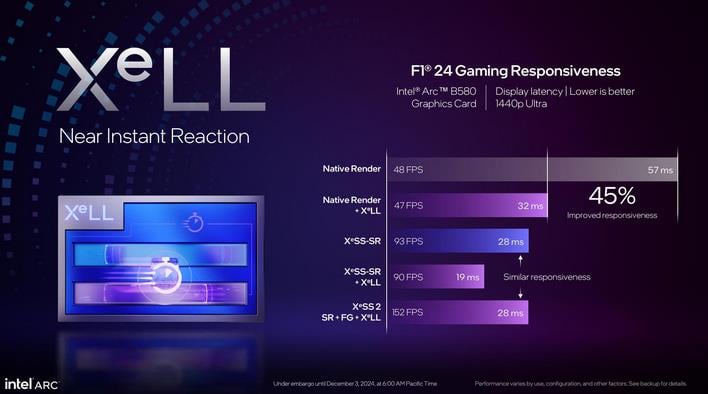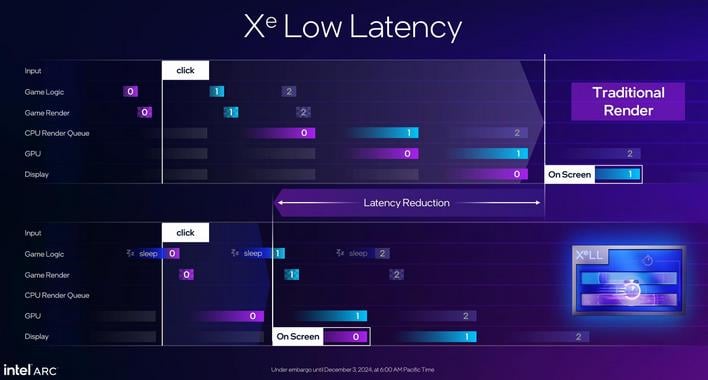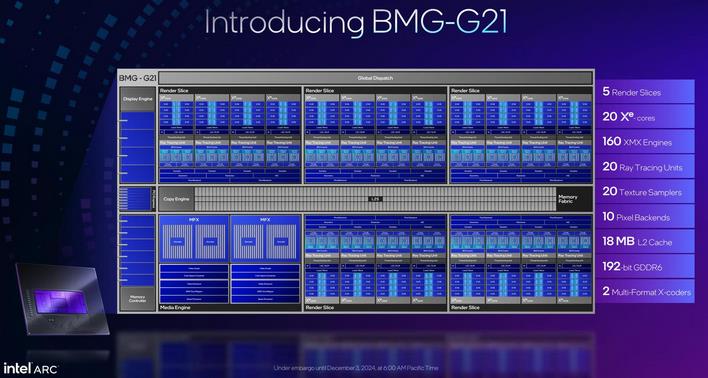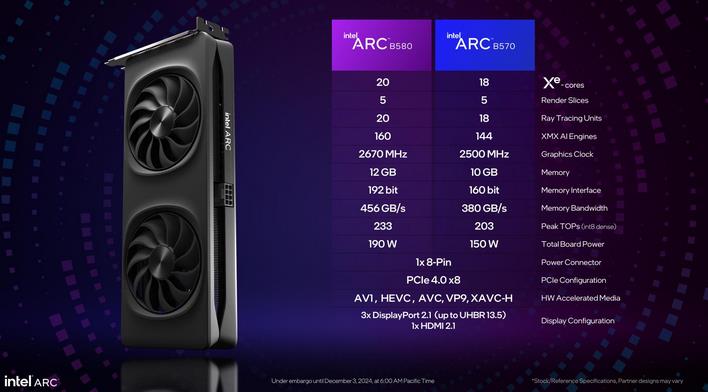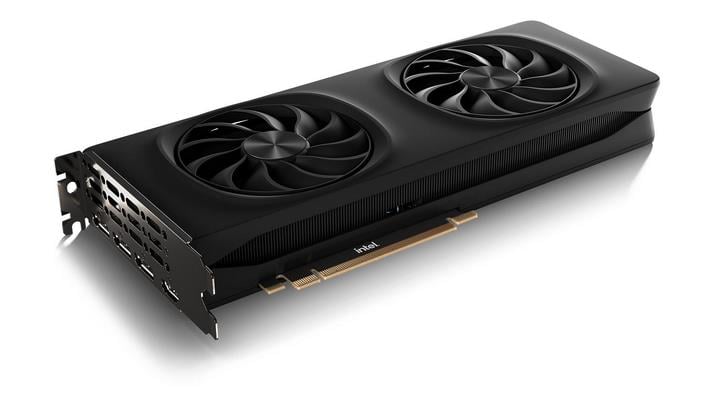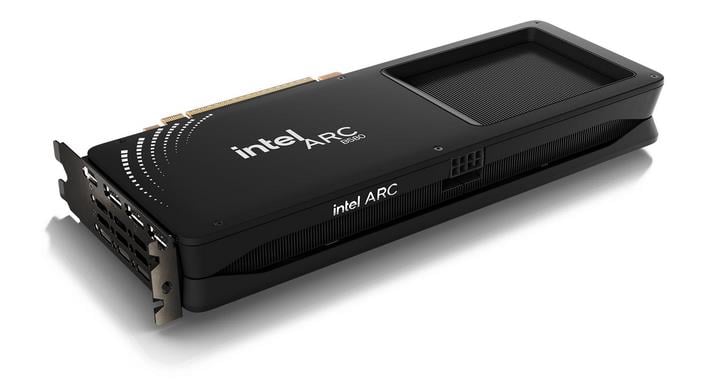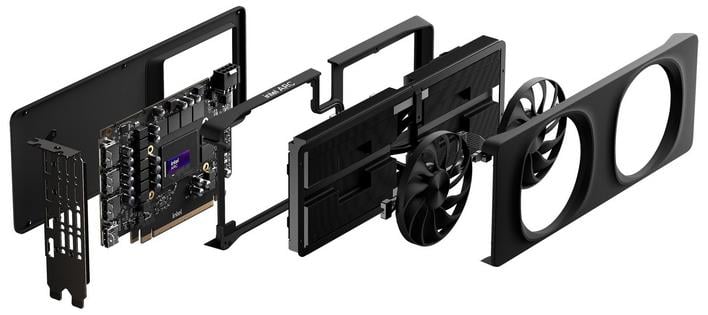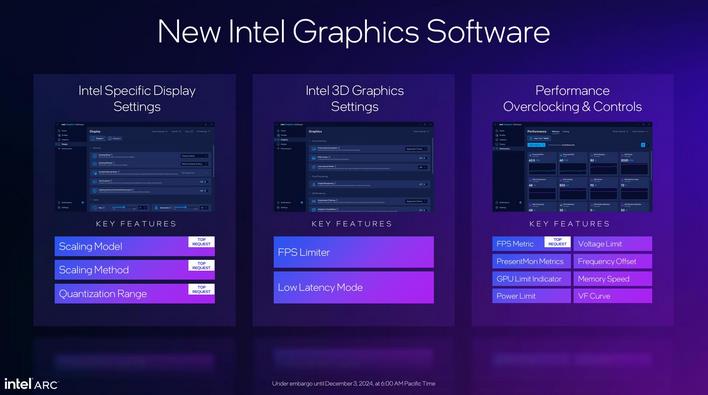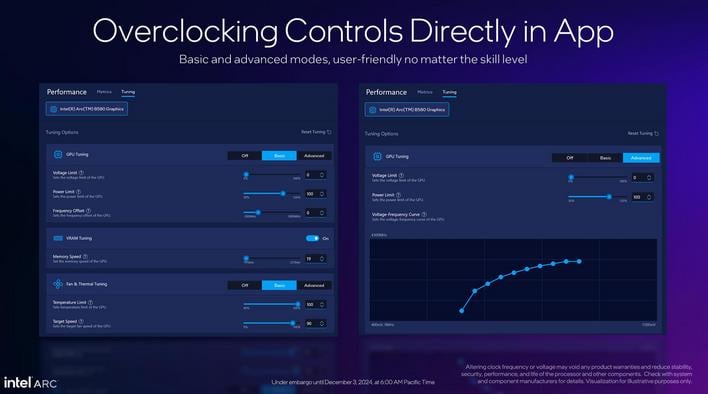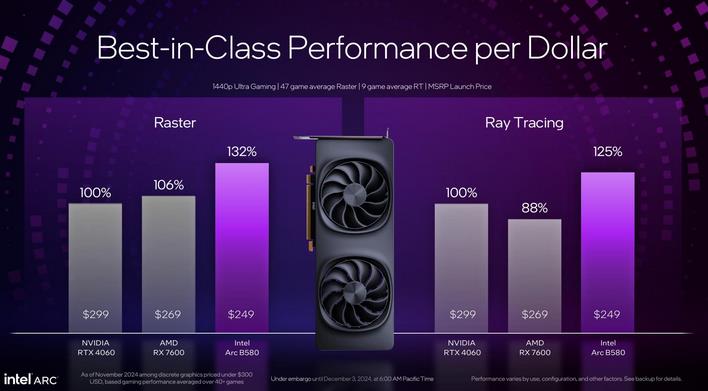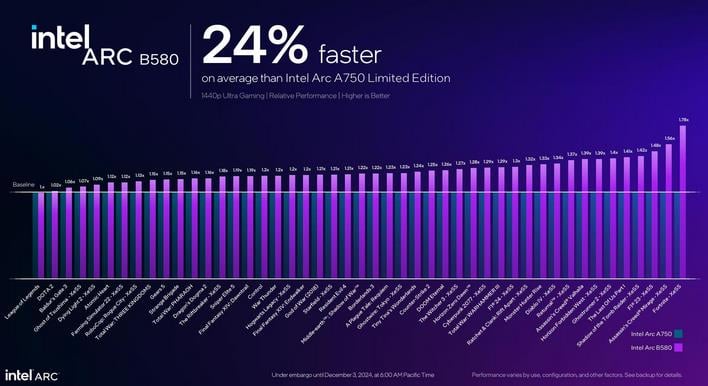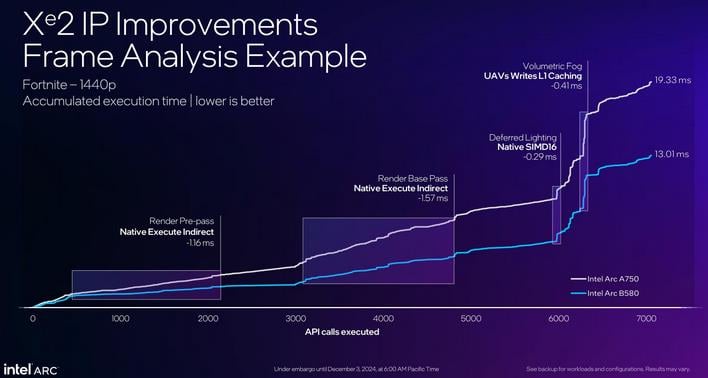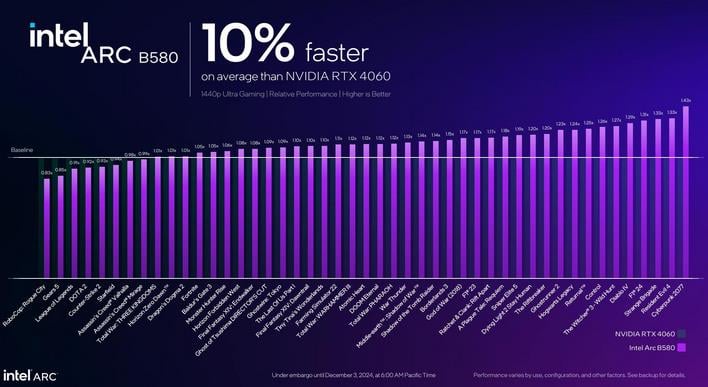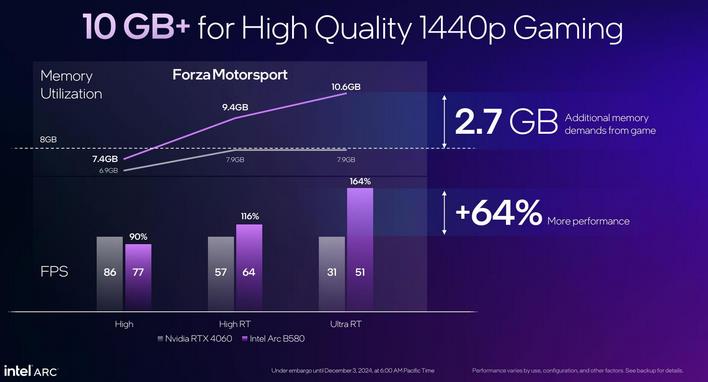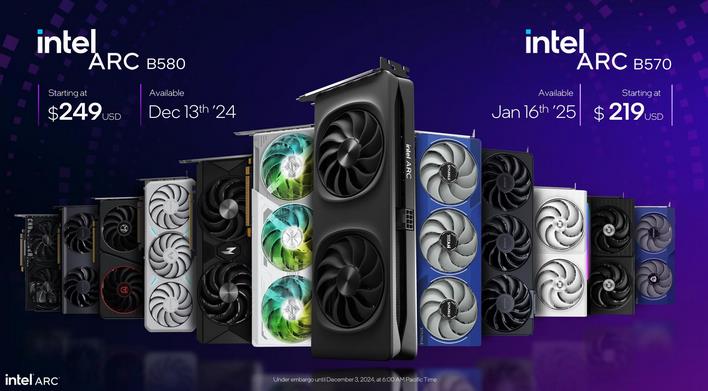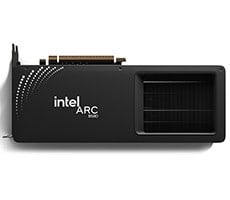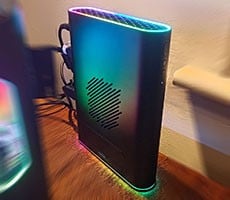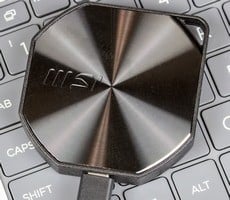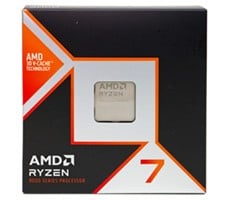Intel Arc B580 And B570 Debut: Battlemage Graphics Cards Arrive Soon
The Intel Arc B580 "Battlemage" Discrete GPU Targets The 1440p Gamer Sweet Spot
|
Key Takeaways:
|
In a change from the Arc A-series Alchemist launch, however, Intel is releasing what was previously its mid-level 500-series cards first. The Arc A750 and A770 came first with the previous-gen and the A580 came later – at least here in the states. This time around, the Intel Arc B580 will spearhead Battlemage’s discrete release, followed a little later by the B570. Whether or not higher-end B700 series GPUs come at a later time remains to be seen.
Intel's New Xe2 GPU Architecture
Before we dive into the Intel Arc B580, we should explain what makes Battlemage different from Alchemist. The official name for the graphics architecture that Battlemage is based on is Xe2. This is not our first look at Xe2, though. The Xe2 graphics architecture actually debuted in the iGPU on Lunar Lake Core Ultra 200V series mobile processors, but with Arc B580 and B570, things are scaled up considerably and the GPU is paired to its own pool of memory for vastly improved performance.The Intel Xe2 Graphics architecture is essentially an upgrade over the previous-gen in every meaningful way. The architecture is better suited to modern gaming workloads and utilization – and ultimately performance – should be higher in virtually all use cases.
Part of the reason for better / increased utilization is support for additional advanced graphics features. Xe2, for example, supports "eXecute Indirect", which is a key feature of DirectX 12 and Vulkan. This feature allows a batch of commands to be sent to the GPU, instead of having the CPU directly issue every single command individually, in sequence. With eXecute Indirect, commands are sent to an indirect buffer and the "ExecuteIndirect" command then tells the GPU to process those commands at the right time.
Even though indirect execution has been a part of DirectX since Direct3D 11.0, the original Xe architecture didn't support it in hardware. That meant it had to be emulated in the software. Lacking support for this feature is one of the reasons that performance of Arc A-series GPUs can be inconsistent in some game titles.
In addition to support for additional features, Intel analyzed how Xe behaved with a wide array of workloads and tweaked numerous parts of the architecture to optimize performance and efficiency. Intel Xe2 arch also features a larger 256K L1 cache to help keep more data close to the cores and keep them fed during periods of higher utilization.
Like the previous-gen Xe architecture, Xe2 is divided into render slices, which include three or more Xe Cores as well as fixed-function graphics hardware that handles things like geometry, texturing, and rasterization. Scaling up the number of slices is how Intel can build larger, more powerful discrete GPUs. As implemented in Lunar Lake, there are two Xe2 render slices, each with four Xe2 Cores. With The Arc B580, the number of slices has been increased to 5, each with four cores, and clocks are much higher too.
The cores in Xe2 are quite different than the original Xe architecture. Where the previous-gen design used 8-wide SIMDs, Xe2 has been built to use 16-wide SIMDs. This is in-line with other contemporary GPU architectures, and this change also should result in a significant improvement in game compatibility, because it’ll require fewer software and driver tweaks to make modern games run correctly. Many game and game engine developers assume they’re working with 16-wide SIMDs from the get-go.
The XMX units onboard Battlemage are also significantly upgraded. They have the ability to complete 2048 FP16 ops per clock or a massive 4096 ops/clock in INT8 math. These units are intended for the type of math required for many of today’s AI-related workloads, including (but not limited to) XeSS upscaling.
As such, LLM performance should be vastly improved on the ArC B580 versus the previous-gen. Intel is actually claiming significantly faster performance than the GeForce RTX 4060 running LLMs, in terms of tokens per second.
XeSS 2 Super Resolution With Frame Gen Arrives Alongside Battlemage
Speaking of XeSS, Intel is also upgrading it and introducing XeSS 2 alongside Battlemage. XeSS 2 takes all things from the original XeSS and adds in support for frame generation. Like some other frame generation solutions, AI models, temporal data and motion vectors are used to help generate new frames based on the on-screen action, and inject them between frames actually rendered by a game.
Also, like other FG solutions, the generated frames aren’t responsive to input, so there can be latency issues, but in many scenarios it shouldn’t be a hindrance to gameplay. And the increased perceived performance with frame generation can have a huge impact on the smoothness of animations, even in CPU bound situations.
Intel is also incorporating motion-to-photon latency reduction features into XeSS 2, dubbed XeLL – or Xe Low Latency. Like Radeon Anti-Lag or NVIDIA’s latency reduction techniques, XeLL modifies the way games sample input data and when clicks or other input are entered into the CPU render queue. XeLL requires implementation into specific games, but we should also note that Intel will be offering a driver-based low latency mode as well.
Here's Intel's Arc B580 GPU, Model BMG-G21
This diagram outlines the overall layout of the Arc B580 GPU – Intel codename BMG-G21 . It’s got 20 Xe2 cores, each with eight Xe2 Vector Engines that includes one XMX matrix math unit. Each Xe2 Core is also paired with a ray-tracing unit (for a total of 20), and then it all feeds through the fixed-function pipeline to the render backend. The Arc B580 is also paired to 12GB of GDDR6 memory operating at an effective data rate of 19Gbps, over a 192-bit interface (434GB/s peak), and the average GPU clock should hover in the 2,670MHz range. The Arc B570 is based on the same physical slice of silicon, but scales things down somewhat. It has 5 render slices as well, each with 3 Xe2 cores, for a total of 18 Xe2 cores. The B570 has 10GB of GDDR6 memory operating at the same speed as the B580, but it’s connected over a narrower 160-bit interface (330GB/s peak). The B570’s average GPU clock will also be somewhat lower, in the 2,500MHz range.
The physical design of the Intel Arc B580 is reminiscent of the A770 at first glance, but there aren’t many similarities under the hood. The B580 PCB is compact, and shorter than the A770, and Intel’s reference design features a heatsink that’s nearly twice as long as the PCB.
The longer heatsink affords the ability to mount one cooling fan directly over the GPU, while the second fan blows air all the way through the heatsink, and projects it away from the card, presumably up and out of a chassis.
Intel’s board partners have similarly incorporated coolers much larger than the cards’ actual PCB. The Arc B580 requires only a single 8-pin PCIe power feed, and outputs on the cards will consist of a trio of DP 2.1 ports and a single HDMI 2.1 port.
Drivers are a critical component of any GPU and graphics architecture, and Intel has proven its commitment to improving its graphics drivers. Performance across the board has steadily improved since the launch of the original Xe architecture and Intel continues to improve and refine its GPU software experience. To that end, the Arc driver control panel has been completed revamped and additional, more robust overclocking tools have been built in.
The overclocking tools bult into Intel’s new graphics app, will offer novice and advanced modes to cater to a wider range of users, and include controls for virtually every aspect of the GPU, like board power limits, memory overclocking, voltage and frequency curve optimization, and fine-grained fan controls.
Intel Arc B580 Projected Performance
In terms of performance, Intel is making some relatively bold claims. The Intel Arc B580 should be significantly faster than the Arc A750 and outrun AMD’s Radeon RX 7600 and NVIDIA’s GeForce RTX 4060 in the majority of games as well.
Intel is claiming the Arc B580 is, on average, 24% faster than the previous-gen Arc A750 when gaming at 1440p with High / Ultra quality game settings. That’s a big boost, considering the B580 is technically in a lower tier than the A750. Gains over the Arc A580 will be even larger. How those gains are achieved in an actual game are represented in the frame analysis above.
Using the same High / Ultra quality game settings, Intel is also claiming about a 10% advantage over the GeForce RTX 4060 as well. Where the Arc B580 will have the biggest advantages is when its larger frame buffer memory comes into play.
NVIDIA's GeForce RTX 4060 packs only 8GB of memory, whereas the Arc B580 and B570 will be equipped with 12GB and 10GB, respectively. When a game’s video memory requirements exceed 8GB, the RTX 4060’s performance will crater, while it swaps data with slower system memory. The Arc B5x0’s higher memory capacity will allow it to better handle more demanding games that benefit from its additional memory capacity.
Intel Arc B580 Graphics Cards Are Coming Soon, B570 Arrives January '25
Of course, vendor provided benchmarks should always be taken with a grain of salt. Thankfully, independent benchmarks and performance analysis won’t be too far off – the Intel Arc B580 is due to hit store shelves in less than two weeks, on December 13. The Arc B570 will come a few weeks later on January 16, 2025. Intel will be offering its own Arc B580 card, alongside partners, but the company is leaving the B570 completely up to its board partners.Pricing for the Arc B580 will start at $249 and the B570 at $219. That puts the Arc B580's pricing about on par with the Radeon RX 7600, but it significantly undercuts the GeForce RTX 4060. Assuming Intel's performance claims ring true in the real-world, the Arc B580 and B570 appear poised to shake up the the mainstream discrete gaming GPU market, and we can't wait to get our hands on them.
Stay tuned for more details and our full review, in just a couple of weeks...

